The blog Of Another Fashion, by Minh-Ha T. Pham, serves as “an alternative archive of the not-quite-hidden but too often ignored fashion histories of U.S. women of color.” The collection includes images taken from public sources as well as photos sent in by readers and provides a contrast to fashion exhibits that usually present fashion trends as almost entirely White experiences.
While the collection is fascinating overall and definitely worth a look, I was particularly struck by the photos of life among Japanese Americans forced to live in internment camps during World War II.
A legal notice requiring Japanese Americans on the West Coast to relocate voluntarily to internment camps or face arrest:
Women playing volleyball:
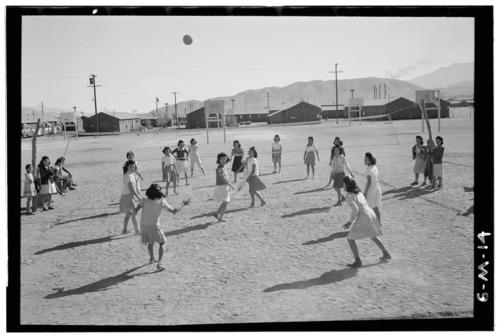 (Library of Congress. Photo by Ansel Adams.)
(Library of Congress. Photo by Ansel Adams.)
Walking to school at the Manzanar camp:
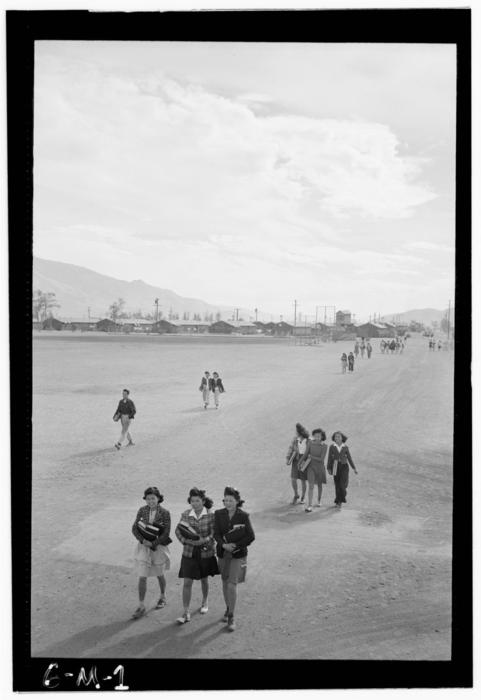 (Library of Congress. Photo by Ansel Adams.)
(Library of Congress. Photo by Ansel Adams.)
Women in biology and dressmaking classes:
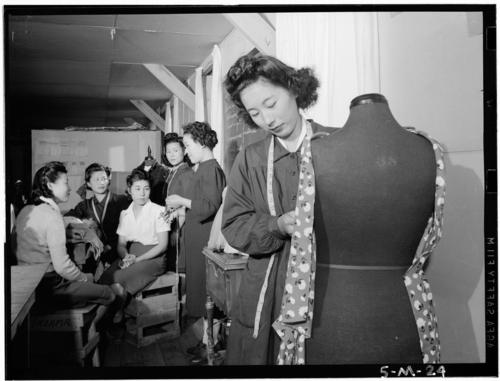 (Both images by Ansel Adams, 1943; Library of Congress.)
(Both images by Ansel Adams, 1943; Library of Congress.)
One camp’s version of a beauty salon:
Intake processing at the Santa Anita center:
(From the Library of Congress’ Farm Security Administration and Office of War Information Collection (April 1942). Photographer unknown.)
Pham discusses the fact that in many of the photos of the processing centers, the women are smiling and look very happy, despite going through what had to be an upsetting, frightening, and humiliating experience. Japanese Americans were not allowed to bring their own cameras into the camps; the photos were taken by others, including Dorothea Lange and Ansel Adams. And they found their subjects didn’t always cooperate with the images they were planning to provide of the camps:
According to Sue Kunitomi Embrey the chair of the Manzanar Committee, Adams hoped to capture the despair of camp life in order to stir some public sympathy for Japanese Americans but was frustrated by all the primping and posing Japanese Americans did when he was photographing.
…
…I hope that images of smiling and fashion-conscious Japanese American women…adds to and deepens our appreciation of the small acts of feeling, creativity, and resistance that happen everyday in spite of huge limitations. In an act as seemingly trivial and trite as smiling for the camera, these women interrupt and take some control of the historical, political, and visual frames through which they’re being viewed.

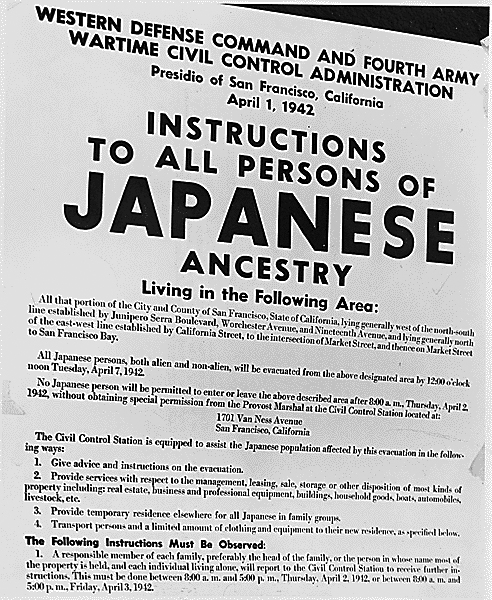
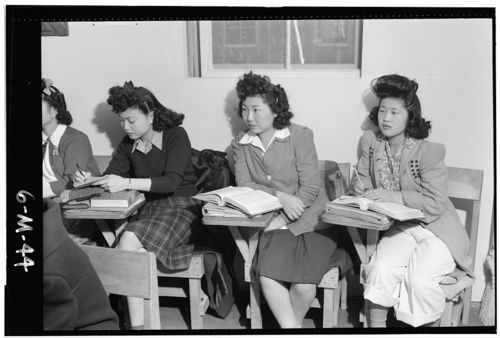
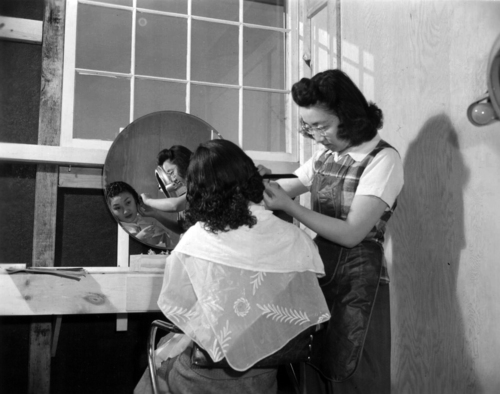
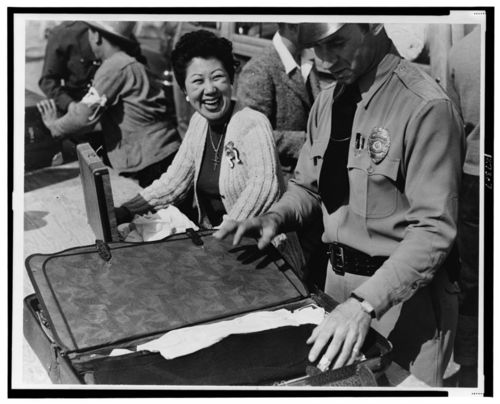
Comments 15
eduardo — March 5, 2011
You can watch here some of the original propaganda. Jump to 4:15, and check out the happy, lively music. “-We’re going on vacation, ftw!”
Syd — March 5, 2011
All these women look more or less like my grandmothers, their sisters and their classmates from the yearbook (they were in high school at the time). I don't know how to feel about that, but it's definitely an interesting group of images.
politicalfootball — March 5, 2011
In an act as seemingly trivial and trite as smiling for the camera, these women interrupt and take some control of the historical, political, and visual frames through which they’re being viewed.
This seems backwards to me. These women were socialized to behave compliantly, and that's what they did in smiling for the camera.
Lester Andrist — March 5, 2011
In the hopes of deepening the discussion, let me offer my own read on what was behind the seeming cheerfulness and compliance performed for the camera. Many of those being detained in the camps believed that they were average Americans and wanted to broadcast how well they fit into the American fabric. By posing for the photographer as women in a beauty shop, or even as teenagers walking each other to class, ethnic Japanese persons were resisting the idea that they were somehow different from the rest of America. Thus their cheerfulness can be seen as an act of resistance, but we shouldn't mistake it for a cheerfulness about being kicked out of their homes and detained in camps. By my read it is a cheerfulness about participating in the mundane doings of American life. They weren't socialized to feel happy about this betrayal. There is plenty of evidence and testimony from these Americans to demonstrate that they were well aware of their mistreatment and deeply sad and angry about it. But express the very real anger, fear, and betrayal that nearly all ethnic Japanese persons privately felt would be to perform the caricatures about Japanese persons that were already being posited in propaganda.
links for 2011-03-07 « Embololalia — March 7, 2011
[...] Life in World War II Japanese American Internment Camps » Sociological Images Pham discusses the fact that in many of the photos of the processing centers, the women are smiling and look very happy, despite going through what had to be an upsetting, frightening, and humiliating experience. Japanese Americans were not allowed to bring their own cameras into the camps; the photos were taken by others, including Dorothea Lange and Ansel Adams. And they found their subjects didn’t always cooperate with the images they were planning to provide of the camps: (tags: asian-americans usa ww2) LikeBe the first to like this post. [...]
Japanese internment camp pictures — August 5, 2011
[...] Life in World War II Japanese American Internment Camps … Mar 5, 2011 … Walking to school at the Manzanar camp: … their own cameras into the camps; the photos were taken by others, … Film on WWII Japanese American Internment Camps · Chinese Laundry … [...]
Emiko Shelvin — November 15, 2018
Hello, This is a lovely recipe, thank you for taking the time to write the article for the great post.